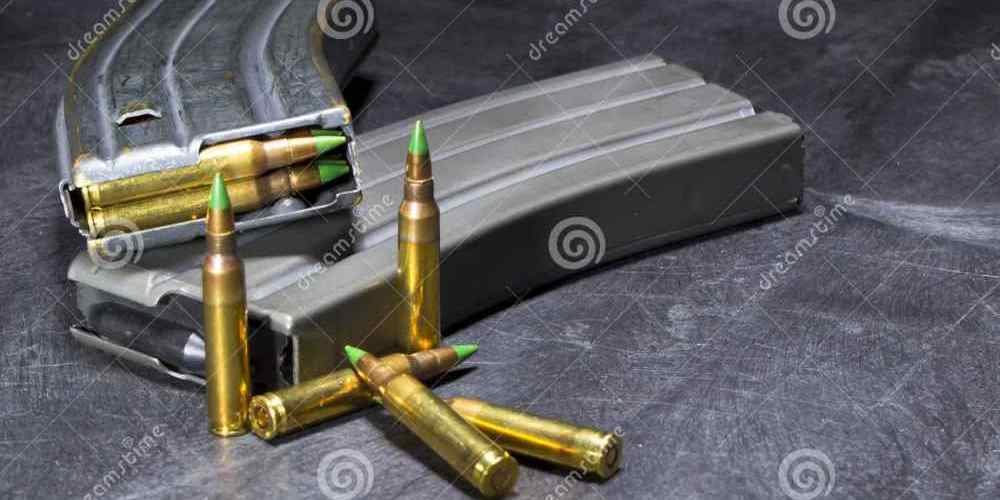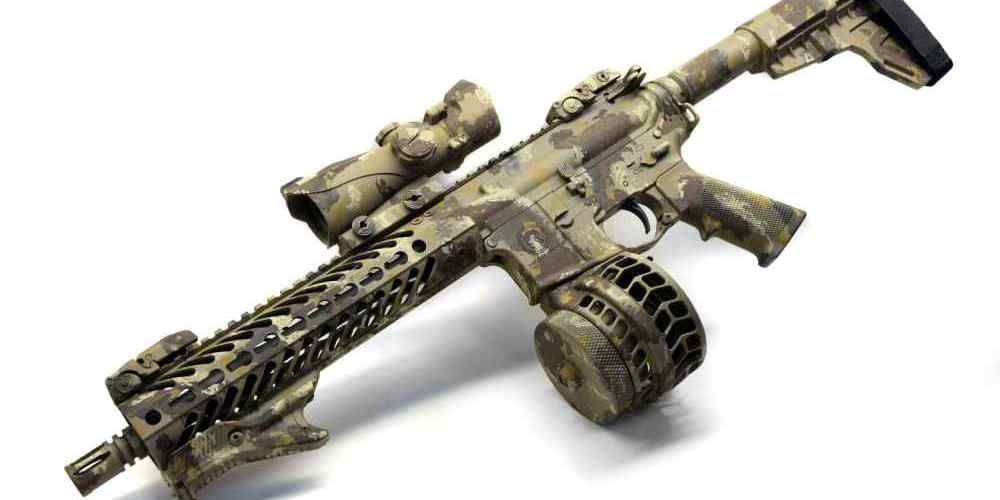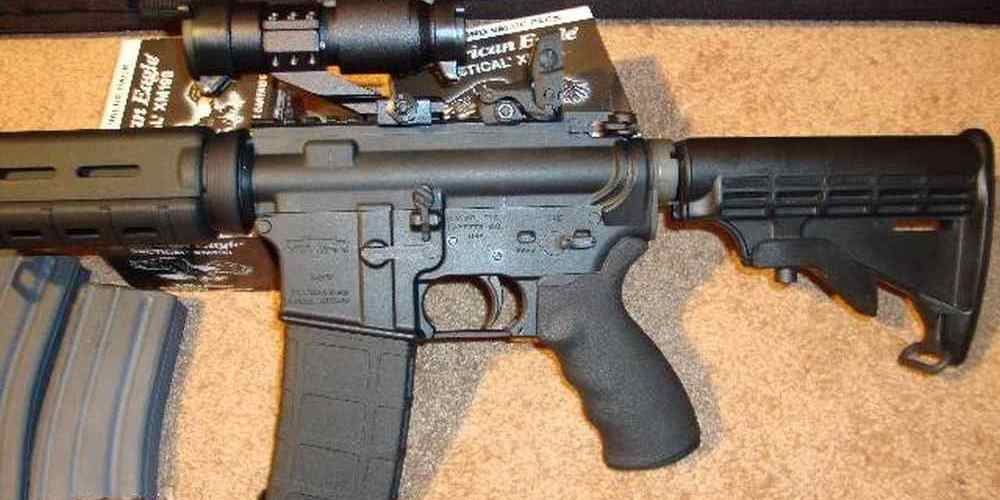5.56 NATO vs .223 Remington: Know the Caliber Contrast.
Ballistics Comparison
When it comes to choosing ammunition for your firearm, it’s important to understand the differences between various calibers. One common comparison that often confuses shooters is the 5.56 NATO and .223 Remington cartridges. While these two rounds may seem similar at first glance, there are some key differences that can impact performance and safety.
Let’s start by looking at the 5.56 NATO round. This cartridge was originally developed for military use and is commonly used in rifles such as the M16 and AR-15. The 5.56 NATO has a higher chamber pressure than the .223 Remington, which allows it to achieve higher velocities and better long-range performance. This increased pressure also means that the 5.56 NATO round is not safe to use in firearms chambered for .223 Remington, as it can cause excessive wear and potentially dangerous malfunctions.
On the other hand, the .223 Remington is a civilian round that is commonly used for hunting and target shooting. While the .223 Remington is very similar to the 5.56 NATO in terms of dimensions, it has a lower chamber pressure, which results in slightly lower velocities and less recoil. This makes the .223 Remington a popular choice for shooters who want a versatile round that is suitable for a wide range of applications.
One important thing to note is that while firearms chambered for 5.56 NATO can safely shoot .223 Remington ammunition, the reverse is not true. Using 5.56 NATO ammunition in a firearm chambered for .223 Remington can lead to dangerous overpressure situations that can cause damage to the firearm and potentially injure the shooter. It’s always important to check the markings on your firearm to ensure that you are using the correct ammunition.
In terms of ballistics, the 5.56 NATO typically has a higher muzzle velocity and energy than the .223 Remington. This can result in better long-range performance and terminal ballistics, making the 5.56 NATO a popular choice for military and law enforcement applications. However, the .223 Remington is still a capable round with good accuracy and terminal performance, making it a solid choice for civilian shooters.
When it comes to availability and cost, the .223 Remington is generally more widely available and less expensive than 5.56 NATO ammunition. This can make the .223 Remington a more attractive option for shooters who are looking to save money on ammunition costs. However, it’s important to remember that the cost of ammunition should not be the only factor to consider when choosing a round for your firearm.
In conclusion, while the 5.56 NATO and .223 Remington cartridges may seem similar, there are some important differences that shooters need to be aware of. Understanding these differences can help you make an informed decision when choosing ammunition for your firearm. Whether you prefer the higher velocities and long-range performance of the 5.56 NATO or the versatility and affordability of the .223 Remington, both rounds have their own strengths and weaknesses. Ultimately, the best choice will depend on your specific needs and preferences as a shooter.
Rifles and Ammunition Compatibility
When it comes to rifles and ammunition compatibility, one of the most common debates among gun enthusiasts is the difference between the 5.56 NATO and .223 Remington cartridges. While these two rounds may seem similar at first glance, there are some key differences that shooters should be aware of before loading up their rifles.

The 5.56 NATO and .223 Remington cartridges are both popular choices for AR-15 rifles and other semi-automatic firearms. However, the 5.56 NATO round is actually a military cartridge that was developed for use in military rifles like the M16. On the other hand, the .223 Remington round is a civilian cartridge that is commonly used in hunting and target shooting.
One of the main differences between the 5.56 NATO and .223 Remington cartridges is their pressure levels. The 5.56 NATO round is loaded to higher pressure levels than the .223 Remington round, which can lead to increased velocity and energy when fired. This higher pressure can also result in increased wear and tear on firearms, so shooters should be mindful of this when choosing which round to use.
Another key difference between the 5.56 NATO and .223 Remington cartridges is their chamber dimensions. While the two rounds have similar external dimensions, the chambers in which they are fired are slightly different. The 5.56 NATO chamber has a longer leade, or freebore, which allows for higher pressure levels and increased velocity. The .223 Remington chamber, on the other hand, has a shorter leade, which can lead to decreased pressure levels and velocity.
Because of these differences in pressure levels and chamber dimensions, shooters should be cautious when using 5.56 NATO ammunition in a rifle chambered for .223 Remington. While it is generally safe to fire .223 Remington ammunition in a rifle chambered for 5.56 NATO, the reverse is not recommended. Firing 5.56 NATO ammunition in a rifle chambered for .223 Remington can lead to increased pressure levels and potential safety hazards.
In addition to pressure levels and chamber dimensions, shooters should also be aware of the differences in bullet weights and velocities between the 5.56 NATO and .223 Remington cartridges. The 5.56 NATO round typically has a heavier bullet and higher velocity than the .223 Remington round, which can result in increased energy and stopping power. Shooters should consider these factors when choosing which round to use for hunting or target shooting.
Overall, while the 5.56 NATO and .223 Remington cartridges may seem similar on the surface, there are some important differences that shooters should be aware of. From pressure levels and chamber dimensions to bullet weights and velocities, understanding these distinctions can help shooters make informed decisions when selecting ammunition for their rifles. By taking these factors into account, shooters can ensure that they are using the right ammunition for their firearms and maximize their shooting experience.
Military and Civilian Use
When it comes to ammunition for firearms, there are a plethora of options available on the market. Two popular choices for rifles are the 5.56 NATO and .223 Remington cartridges. While these two rounds may seem similar at first glance, there are some key differences that set them apart. Understanding these differences is crucial for both military and civilian shooters to ensure they are using the correct ammunition for their firearms.
One of the main differences between the 5.56 NATO and .223 Remington cartridges is their chamber pressure. The 5.56 NATO round is loaded to a higher pressure than the .223 Remington round. This higher pressure can result in increased velocity and energy when firing the 5.56 NATO round. While this may seem like a benefit, it is important to note that using 5.56 NATO ammunition in a firearm chambered for .223 Remington can lead to safety issues due to the increased pressure.
Another key difference between the two cartridges is their dimensions. The 5.56 NATO round has slightly different dimensions than the .223 Remington round, which can affect how they fit in a firearm’s chamber. While most firearms chambered for .223 Remington can safely fire 5.56 NATO ammunition, the reverse is not always true. Using .223 Remington ammunition in a firearm chambered for 5.56 NATO can lead to reliability issues and potentially dangerous malfunctions.
In addition to chamber pressure and dimensions, the 5.56 NATO and .223 Remington cartridges also have different loadings. The 5.56 NATO round is typically loaded with heavier bullets and higher powder charges than the .223 Remington round. This can result in increased recoil and muzzle blast when firing the 5.56 NATO round. While this may not be a concern for military shooters who are trained to handle these factors, civilian shooters may find the increased recoil and muzzle blast of the 5.56 NATO round to be less enjoyable to shoot.
Despite these differences, both the 5.56 NATO and .223 Remington cartridges are popular choices for military and civilian shooters alike. The 5.56 NATO round is the standard cartridge used by the military in rifles such as the M16 and M4, while the .223 Remington round is a popular choice for civilian shooters in rifles such as the AR-15. Both cartridges offer good accuracy and terminal performance, making them suitable for a wide range of shooting applications.
In conclusion, while the 5.56 NATO and .223 Remington cartridges may seem similar at first glance, there are some key differences that set them apart. Understanding these differences is crucial for both military and civilian shooters to ensure they are using the correct ammunition for their firearms. Whether you are a military shooter looking for a reliable and effective round for combat, or a civilian shooter looking for a versatile and accurate round for target shooting or hunting, both the 5.56 NATO and .223 Remington cartridges have something to offer.
Cost and Availability
When it comes to choosing between the 5.56 NATO and .223 Remington cartridges, one important factor to consider is the cost and availability of each. Both cartridges are popular choices among shooters, but there are some key differences in terms of cost and availability that may influence your decision.
One of the main differences between the 5.56 NATO and .223 Remington cartridges is their cost. Generally speaking, 5.56 NATO ammunition tends to be slightly more expensive than .223 Remington ammunition. This is due to a variety of factors, including the higher demand for 5.56 NATO ammunition among military and law enforcement agencies.
In addition to being more expensive, 5.56 NATO ammunition can also be more difficult to find in some areas. While .223 Remington ammunition is widely available at most sporting goods stores and gun shops, 5.56 NATO ammunition may be harder to come by. This is especially true in rural areas or areas with fewer gun stores.
However, despite the higher cost and potential availability issues, many shooters still prefer the 5.56 NATO cartridge for its superior performance and versatility. The 5.56 NATO cartridge is known for its higher velocity and greater energy transfer, making it a popular choice for long-range shooting and hunting.
On the other hand, the .223 Remington cartridge is a more budget-friendly option that is widely available and easy to find. While it may not offer the same level of performance as the 5.56 NATO cartridge, the .223 Remington is still a reliable choice for target shooting and hunting.
Ultimately, the decision between the 5.56 NATO and .223 Remington cartridges will come down to your personal preferences and shooting needs. If you are looking for a high-performance cartridge and are willing to pay a little extra for it, the 5.56 NATO may be the better choice for you. However, if you are on a budget and are looking for a more affordable option that is readily available, the .223 Remington may be the way to go.
Regardless of which cartridge you choose, it is important to remember that both the 5.56 NATO and .223 Remington are capable and reliable cartridges that have been used by shooters for decades. Whether you are a seasoned shooter or a beginner, both cartridges offer excellent performance and accuracy that will help you hit your target every time.
In conclusion, when it comes to cost and availability, the 5.56 NATO and .223 Remington cartridges each have their own advantages and disadvantages. While the 5.56 NATO may be more expensive and harder to find, it offers superior performance and versatility. On the other hand, the .223 Remington is a more budget-friendly option that is widely available and easy to find. Ultimately, the choice between the two cartridges will depend on your personal preferences and shooting needs.
Accuracy and Performance
When it comes to choosing ammunition for your firearm, it’s important to understand the differences between various calibers. One common comparison that often arises is between the 5.56 NATO and .223 Remington cartridges. While these two calibers may seem similar at first glance, there are some key differences that can impact their accuracy and performance.
One of the main differences between the 5.56 NATO and .223 Remington cartridges is their chamber pressure. The 5.56 NATO cartridge is loaded to a higher pressure than the .223 Remington, which can result in increased velocity and energy. This higher pressure can also lead to better performance at longer ranges, making the 5.56 NATO a popular choice for military and law enforcement applications.
In contrast, the .223 Remington cartridge is loaded to a lower pressure, which can result in slightly lower velocity and energy compared to the 5.56 NATO. While this may seem like a disadvantage, the lower pressure of the .223 Remington can actually lead to better accuracy in some firearms. This is because the lower pressure can result in less recoil and muzzle blast, allowing for more consistent shot placement.
Another factor to consider when comparing the 5.56 NATO and .223 Remington cartridges is their bullet design. While both cartridges can use the same bullet weights, the 5.56 NATO cartridge is often loaded with bullets that have a longer ogive and higher ballistic coefficient. This can result in better long-range performance and improved accuracy, especially in windy conditions.
On the other hand, the .223 Remington cartridge is typically loaded with bullets that have a shorter ogive and lower ballistic coefficient. While this may result in slightly reduced long-range performance, the shorter bullets can be more stable in some firearms, leading to improved accuracy at shorter ranges.
When it comes to choosing between the 5.56 NATO and .223 Remington cartridges, it ultimately comes down to personal preference and intended use. If you are looking for maximum velocity and energy, especially at longer ranges, the 5.56 NATO may be the better choice. However, if you prioritize accuracy and consistency, especially at shorter ranges, the .223 Remington may be the more suitable option.
It’s also worth noting that some firearms are chambered to accept both 5.56 NATO and .223 Remington cartridges. In these firearms, it is generally safe to shoot either cartridge, but it’s always a good idea to consult the manufacturer’s recommendations to ensure safe and reliable performance.
In conclusion, while the 5.56 NATO and .223 Remington cartridges may seem similar on the surface, there are some key differences that can impact their accuracy and performance. By understanding these differences and considering your own preferences and intended use, you can make an informed decision when choosing between these two popular calibers.





